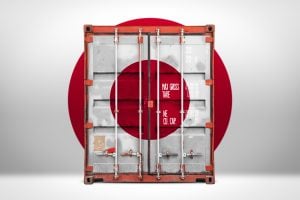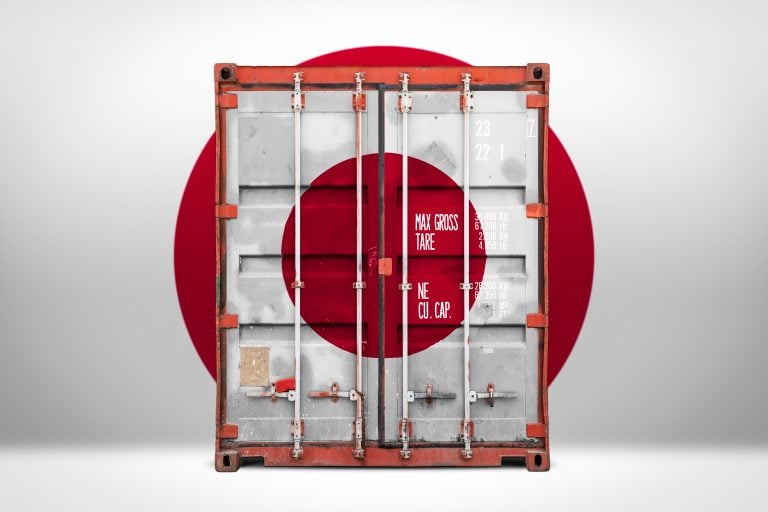Thanks to the good folks at Rock-a-Fella Records … sorry, RBC Capital Markets … we have a well-timed rundown of all the major iron ore producers heading into reporting season.
Here’s what to look out for as Rio Tinto (ASX:RIO) loads up the ink and gets two weeks of production reporting under way for the ASX this morning.
It’s all fairly consistent with iron ore price movements, with wet weather at Australian ports keeping supply in check.
Probable disappointments on shipments jags with iron ore’s rebound in early April, which prevented weak demand in China pushing prices beneath US$100/t.
While rising port stockpiles and low rebar prices in the Middle Kingdom have been cause for concern for Australia’s biggest export industry, the iron ore market remains tightly balanced and sensitive to disruptions.
They think Rio Tinto (ASX:RIO) turned out 80.8Mt in the March quarter thanks to wet weather and maintenance, shy of the runrate required to hit the mid-point of its 323-338Mt 2023 guidance.
That was impacted as well by a minor rail disruption in February, though RBC does not think RIO’s full year guidance will be impacted due to mine inventories and high volumes of lower grade SP-10 product in its sales mix.
Fortescue (ASX:FMG) could be one to look out for when it comes to a production disappointment.
RBC says it now forecasts shipments for FY2024 of 190Mt, shy of last year’s record and below guidance for hematite sales of 192-197Mt, after shipping an estimated 43Mt in the quarter on RBC’s best guess. But FMG will be helped by strong realisations for lower grade ore, with realisations of ~89% converting to prices of US$110/t.
Iron Bridge, expected by FMG to ship 2-4Mt this financial year (down from initial guidance of up to 7Mt), should ship 1.72Mt according to RBC, though consensus is lower at 1.41Mt.
FMG still hopes to up output to a nameplate of 22Mtpa by late 2026 at the high grade magnetite operation in the Pilbara.
If FMG did ship 43.1Mt that would be a massive drop from 48.7Mt in the December quarter and 46.3Mt in the same period in 2023.
BHP (ASX:BHP) is expected to deliver 65Mt (69.8Mt on a 100% basis) from its Pilbara iron ore operations, down from 72.1Mt (100%) in March 2023 and 72.7Mt in December.
But RBC expects a ‘seasonally strong’ fourth quarter, projecting BHP will ship 284Mt in FY24 to fall within its 282-294Mt guidance range.
Mineral Resources (ASX:MIN) iron ore output could disappoint as well at a projected 4.2Mt due to weather impacts, though its larger scale Onslow Iron project is only due to become a factor through the first half of FY25.
How will China’s economy help iron ore?
RBC’s Aussie team of Kaan Peker, Paul Wiggers de Vries and Alex Barkley thinks more spending will bring a Chinese economic recovery in the months to come.
But they have warned that could revert by the end of 2024.
Their iron ore price forecasts reflect that, with prices projected at US$110-120/t in the June quarter, falling to US$95/t by the year’s close and US$90/t in 2025, when RBC thinks they will find cost support levels.
“For iron ore, despite a slow start, seasonal demand will likely support prices in 2Q, but we see upside capped by higher-than-anticipated Chinese port inventory,” RBC’s number crunchers posited.
“Similar to 2023, low scrap availability and high Chinese steel exports should continue to support iron ore demand in 2024 (but lower YoY). We forecast iron ore prices $110-120/t in Q2, fading to $95/t in Q4, with prices falling to the cost curve in 2025 ($90/t RBCe).
“We sit broadly in line with consensus for CY24/CY25E, but retain our below-consensus long-term pricing (US$75/t).”
Iron ore was fetching US$110.90/t in Singapore at midday yesterday, down 1.17%.
That number improved over the course of the trading day as China’s surprisingly strong first quarter GDP growth number came through.
Always to be read with a sceptical eye, the National Bureau of Statistics claimed China’s GDP rose 5.3% in the March quarter, 0.7% above a consensus collected in a Reuters poll.
Fixed asset investment rose 4.5% through the first quarter, but there were some nasties for the steel complex.
New property projects slipped 27.8% YoY, with sales by floor area down 19.4% YoY to 226.68m square metres.
Crude steel output was down 25 to 256.6Mt, with March a particularly weak number, down 7.8% to 88.3Mt in a typically strong period for steel production.
China’s MySteel said EAF mills — heavily reliant on power prices and scrap availability — increased production in March, while blast furnaces saw their utilisation slip 0.58% in the month to 82.76% due to weak profit margins.
“China’s finished steel prices lost ground in March, as demand from end-users failed to meet market expectations during the traditional peak season for steel consumption, Mysteel Global noted,” MySteel’s Nancy Zheng wrote.
From Russia with a Shove
Up 25% yesterday was embattled coal producer Tigers Realm Coal (ASX:TIG), which recently lost a long-running battle to sidestep sanctions imposed on the import and export of Russian goods, imposed in the wake of Putin’s invasion of Ukraine.
The Siberian coal producer had been shipping thermal and coking coal to China from its Amaam North and Amaam deposits and Beringovsky Coal Terminal.
Backed in part by Russia’s public wealth fund, TIG will extract US$49m from the project’s sale to a company known as APM-Invest.
APM is owned by Mark Buzuk, a Russian businessman who is a director of Russian steelmaker Metalloinvest Management Company.
Russian coal hasn’t been the best business in the world in financial terms since the invasion of Ukraine.
While all coal prices were sent into orbit by the war, which caused artificial shortages due to sanctions placed on Russian materials.
But as prices and demand has moderated, Russian producers have often had to discount product to access certain markets, having been excluded by jurisdictions like Korea, Japan and the EU.
Thermal coal futures were fetching US$127.75/t yesterday, with coking coal futures paying US$235/t.
The post Bulk Buys: Wet weather keeps iron ore exports in check and From Russia with a Shove appeared first on Stockhead.




















